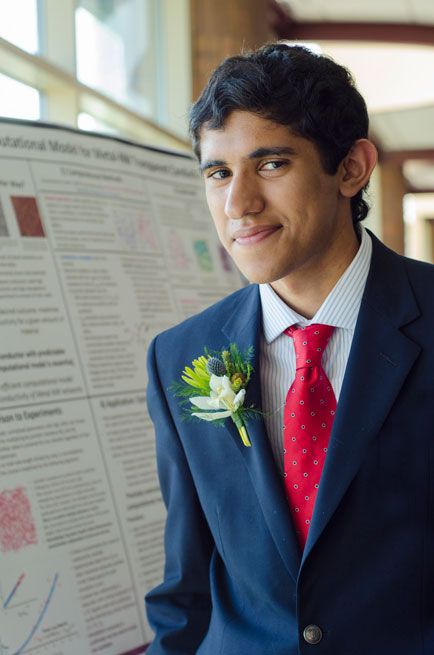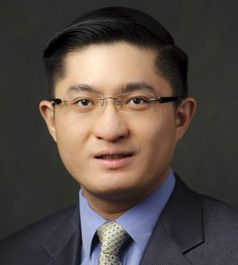
Bethlehem high-schooler takes bronze in national research competition with boost from Lehigh
Like many high schoolers, Milind Jagota, a senior at Liberty High School in Bethlehem, PA, is seriously into technology...but in Milind's case, it's not just about gaming and viral videos. This young man is deeply, deeply into technology; with some help from Lehigh University, he's transformed that passion into an impressive third place finish in the 2015 National Siemens STEM Competition, which took place December 4-8 at this year's host George Washington University in Washington, DC.
Just to qualify for the national finals -- comprised of 6 individuals and six teams -- is an act of intense academic triumph: a total of 1,781 team and individual projects, the combined efforts of some 4,000 student competitors from around the U.S., were submitted to Siemens Foundation for consideration in 2015. Of these, 466 made it to the semifinal round, 97 of whom were then named regional finalists. The final cut of 12 projects was announced in November.
"Competing at nationals was hectic but fun," says Milind. "Interacting with the other finalists and hearing about their research was probably the best part. I was pretty thrilled to place third out of the 6 individual finalists -- all the projects were amazing."
Milind's Siemens competition project, entitled "Computational Study of Random Nanowire Networks: Optimization of Conductivity through Orientation," explores the use of advanced materials that use random networks of microscopic wires as transparent conductors. Transparent conductors are ubiquitous in modern technology; Milind's work in developing this material could significantly reduce production cost and accelerate the development of new electronic devices and applications, from solar panels to smartphones to LED/LCD displays.
An early launch into research
Working with Professor Nelson Tansu of Lehigh University's Center for Photonic and Nanoelectronics, Milind has developed into a talented young academic researcher at a relatively young age, starting down the path with independent research in tenth grade.
"As I saw smartphones and tablets becoming ubiquitous in daily life, I began to wonder about the touchscreen technology that made them possible," says Milind.
A year later, he contacted Tansu and asked to continue to develop research under his mentorship. Tansu agreed, and Milind was off and running.
"Working with Dr. Tansu increased the rigors and standards of my work from what I did independently," Milind continues. "He also offered a lot of insight about how to best present my work."
This past May, their work together was published in the Nature journal Scientific Reports –- with Milind as lead author, a rare accomplishment for a college student or graduate student, let alone a high schooler. In that paper, Conductivity of Nanowire Arrays under Random and Ordered Orientation Configurations, Milind also helped develop a computational model for simulating metal nanowire networks. The researchers used this model to extract results for the first time on how conductivity of random metal nanowire networks is affected by varying orientation of the wires.
Milind is no stranger to academic competition and accolades. In 2014, he competed in the Intel-sponsored International Science and Engineering Fair; closer to home, in March of 2015 he was honored by Da Vinci Science Center of Allentown, PA, as one of its Student Excellence Award winners.
"The development of such novel transparent conducting films has the potential to significantly improve modern electronics," said Siemens regional competition judge Dr. Ali Khademhosseini, Professor of Medicine at Harvard Medical School and Director of the Biomaterials Innovation Research Center at Brigham and Women's Hospital. "The findings of his project showcase that more affordable electronic devices could be the wave of the future as materials become more affordable in production."
Launched by the Siemens Foundation in 1999, the Siemens Competition promotes excellence in math, science and technology across the U.S. High school students submit innovative individual and team research projects to regional and national levels of competition as they vie for college scholarships ranging from $1,000 up to $100,000.
-- Sarah Plombon '16 is a journalism student interning with the P.C. Rossin College of Engineering and Applied Science.


